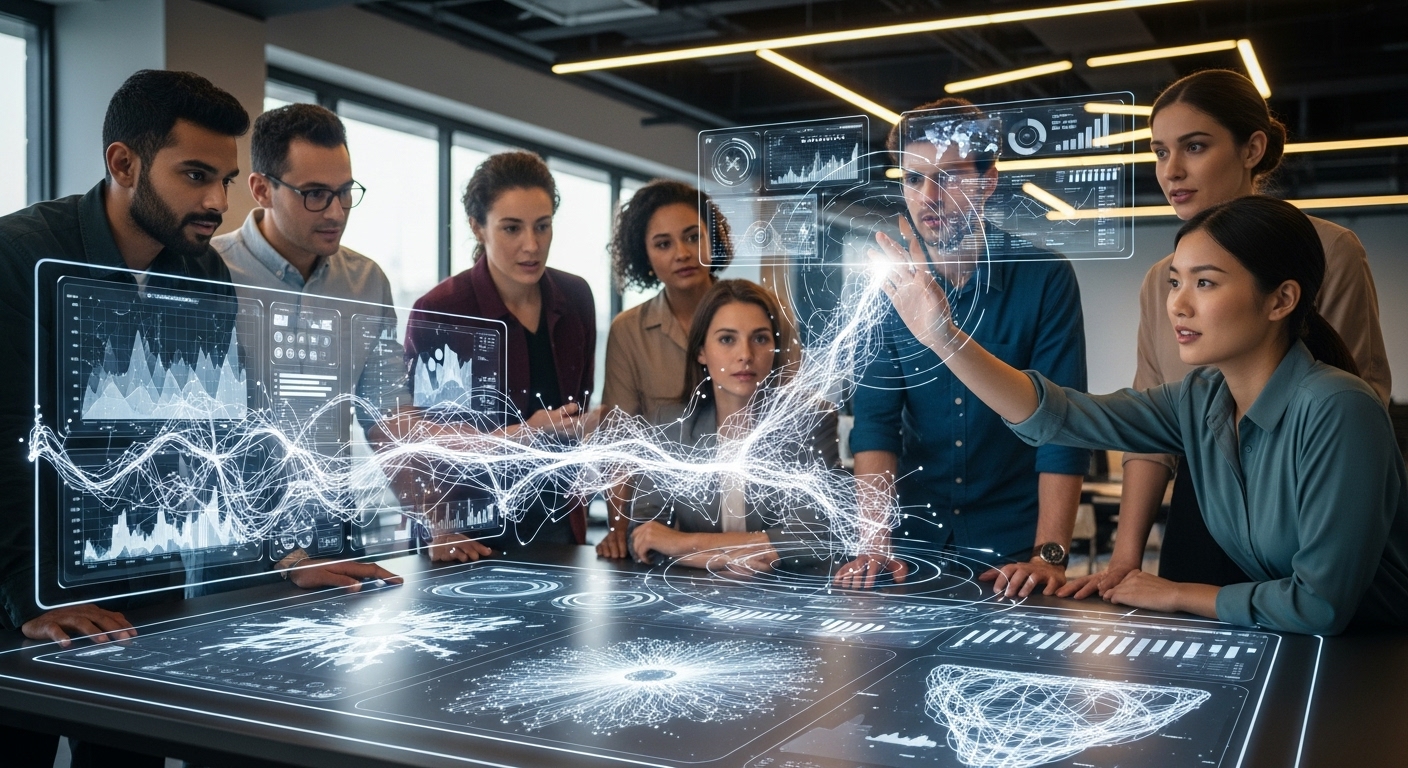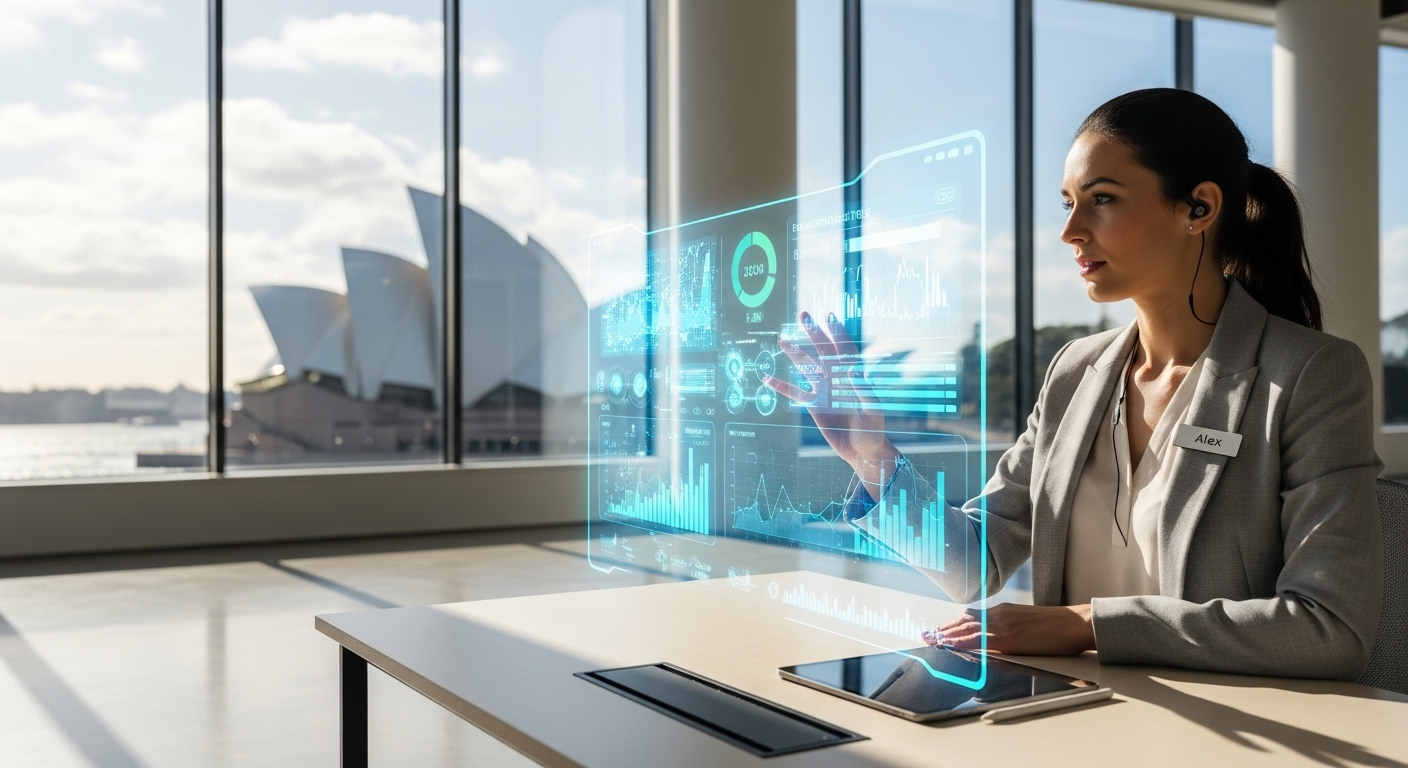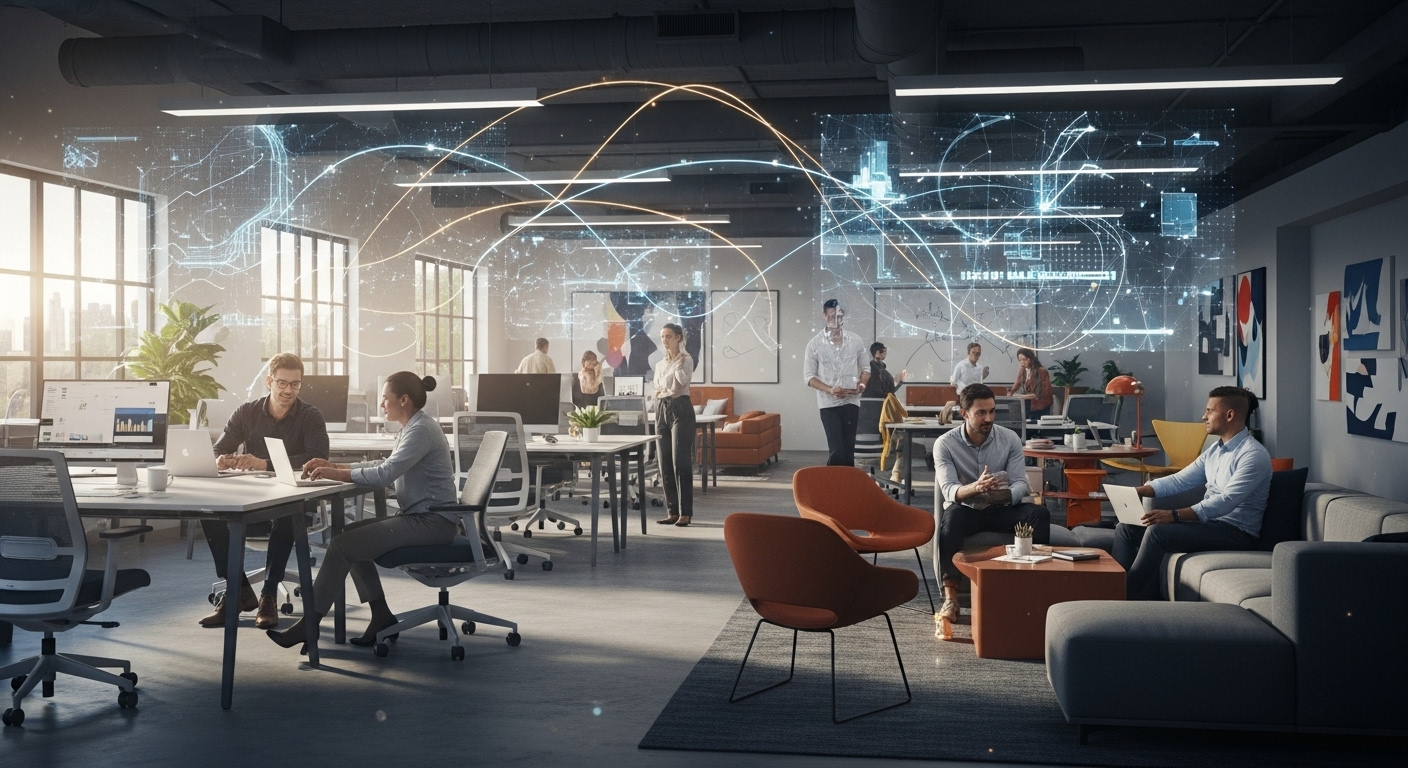The rapid integration of artificial intelligence into the workplace has sparked a dual narrative of unprecedented efficiency and underlying anxiety. As algorithms optimize workflows and automate routine tasks, a critical question emerges: what happens to human ingenuity? While the push for automation promises streamlined operations and data-driven precision, it also risks creating sterile environments where creativity, spontaneity, and true innovation are sidelined. This isn’t a dystopian forecast but a strategic challenge for today’s leaders. The future of work isn’t a zero-sum game between human and machine. Instead, sustainable success lies in creating a symbiotic relationship where technology augments, rather than replaces, our most valuable human traits. This article explores a blueprint for fostering human-centric innovation, ensuring that as our workplaces get smarter, they also become more creative, resilient, and fundamentally human. We will delve into redefining innovation for the AI era, understanding the risks of an automation-first mindset, and building the cultural and procedural frameworks that place people at the core of technological progress.
Redefining innovation in the age of intelligence
For decades, workplace innovation was synonymous with disruptive products, novel services, or groundbreaking market strategies. It was an event, a breakthrough moment often born from years of siloed research and development. The rise of artificial intelligence, however, demands a more fluid and integrated definition. Innovation in the age of intelligence is no longer just about the destination; it’s about fundamentally transforming the journey. It’s a continuous process of enhancement, optimization, and discovery woven into the daily fabric of operations. AI acts as a powerful catalyst in this shift, moving the goalposts from solely human-led discovery to human-AI collaborative advancement. For example, AI-powered analytics can sift through massive datasets to identify subtle market trends or operational inefficiencies that would be invisible to human analysts, providing the raw material for strategic pivots. Generative AI can serve as a tireless brainstorming partner, producing hundreds of variations on a concept that a human team can then refine and contextualize. This redefinition means innovation is democratized. It’s no longer the exclusive domain of an R&D department. An employee on the factory floor can use AI-driven predictive maintenance alerts to devise a more efficient repair schedule, while a marketing team can leverage machine learning to personalize customer interactions at scale. The locus of innovation shifts from seeking a single, seismic breakthrough to cultivating a thousand daily improvements. The true power of AI in this context is its ability to handle the cognitive heavy lifting of data processing and pattern recognition, freeing up human talent to focus on what they do best: strategic thinking, empathetic design, creative problem-solving, and ethical oversight.
The risks of an automation-first mindset
While the allure of efficiency is powerful, an unwavering focus on automation can inadvertently sabotage the very innovation it’s meant to support. An automation-first mindset, which prioritizes technological solutions above all else, introduces significant risks to an organization’s long-term health and creativity. One of the most immediate dangers is the erosion of critical thinking and institutional knowledge. When employees become overly reliant on AI to provide answers or dictate processes, their own problem-solving muscles atrophy. They may follow algorithmic recommendations without questioning the underlying data or logic, leading to a brittle system that can’t adapt when faced with novel or unexpected challenges. This creates a culture of passive execution rather than active engagement. Furthermore, an excessive emphasis on automation can lead to employee disengagement and fear. If workers perceive technology primarily as a tool for monitoring, measuring, and ultimately replacing them, their motivation to experiment, take risks, or offer discretionary effort plummets. Innovation requires a sense of psychological safety that is fundamentally incompatible with a culture of surveillance. Another subtle but profound risk lies in algorithmic bias. AI models are trained on historical data, and if that data reflects past biases, the AI will perpetuate and even amplify them at scale. An automation-first organization might inadvertently create hiring algorithms that discriminate against certain demographics or marketing tools that ignore entire customer segments, stifling the diversity of thought that is the lifeblood of innovation. The organization essentially becomes trapped in a feedback loop of its own past, unable to see the future clearly. The ultimate risk is that in the race to eliminate inefficiency, we also eliminate the valuable friction, serendipitous encounters, and ‘happy accidents’ that often spark the most significant breakthroughs.
Building the foundation for human-centric innovation
To counteract the risks of an automation-first approach, leaders must intentionally build a foundation centered on human needs, strengths, and well-being. This foundation rests on the bedrock of psychological safety. In a workplace where AI can instantly provide a data-backed ‘optimal’ solution, employees must feel secure enough to challenge it, to propose an alternative based on intuition, or to experiment with a completely different path. Psychological safety means creating an environment where failure is treated as a learning opportunity, not a punishable offense. It’s the assurance that one’s voice is valued, questions are encouraged, and vulnerability is met with support. Leaders can foster this by modeling curiosity, admitting their own mistakes, and celebrating the learning that comes from failed experiments. Beyond safety, a human-centric foundation requires a deep investment in communication and transparency. When implementing new AI tools, it’s not enough to simply roll out the technology. Leaders must communicate the ‘why’ behind the change, clearly explaining how the tool is designed to augment employee capabilities and free them from drudgery, not to replace them. This narrative is crucial for building trust and securing buy-in. It reframes AI from a threat into a powerful collaborator. This foundation is also physical and digital. It involves designing workspaces—whether in an office or on a remote platform—that encourage the kind of spontaneous interaction and cross-pollination of ideas that algorithms cannot replicate. It means providing employees with the autonomy to choose the tools and methods that work best for them, trusting their professional judgment over rigid, algorithmically enforced workflows.
AI as a co-pilot, not an autopilot
The most effective framework for integrating AI into the workplace is to view it as a co-pilot—a powerful assistant that enhances the skills of the human operator but never fully takes the controls. This approach leverages the distinct strengths of both human and machine intelligence. The human pilot is responsible for the strategic direction, ethical considerations, and creative leaps, while the AI co-pilot handles navigation, data analysis, and system monitoring. This collaborative model can be applied across numerous business functions. For a product development team, generative AI can act as a co-pilot by producing dozens of initial design mockups or code snippets, saving countless hours. The human designers and engineers then step in to apply their taste, user empathy, and strategic understanding to refine these raw outputs into a polished, market-ready product. In this scenario, the AI accelerates the divergent phase of brainstorming, allowing humans to focus more energy on the convergent phase of critical selection and refinement. Similarly, in market research, an AI co-pilot can analyze thousands of customer reviews, social media comments, and support tickets to identify emerging trends and pain points. It can present this information in a digestible dashboard, but it is the human strategist who must interpret the ‘why’ behind the data. As business analyst Tom Davenport noted,
“The companies that will dominate in the future will be those that can combine the best of what humans and machines have to offer.”
This co-pilot model empowers the human expert to ask deeper questions, connect disparate ideas, and ultimately make the final, nuanced judgment call. It keeps the human firmly in the driver’s seat, using AI as a sophisticated instrument panel to navigate complex environments with greater speed and accuracy.
Designing workflows for human-AI collaboration
Simply adopting AI tools is not enough; organizations must consciously redesign their workflows to facilitate seamless human-AI collaboration. This means moving beyond linear, assembly-line processes and embracing more dynamic, iterative models. One of the most effective approaches is the ‘human-in-the-loop’ (HITL) system. In an HITL workflow, the AI performs the bulk of the data processing or initial task execution, but at critical junctures, it pauses to request human input, validation, or correction. This is essential in fields where context and nuance are paramount, such as medical diagnostics, legal document review, or high-value customer service. The human expert’s feedback not only ensures the quality of the immediate task but is also used to retrain and improve the AI model over time, creating a virtuous cycle of continuous improvement. Another key strategy is adapting agile methodologies for the AI era. Teams can use ‘sprints’ to test and integrate new AI capabilities, holding regular reviews to discuss what’s working and what isn’t. This allows for rapid experimentation and prevents the organization from becoming locked into a suboptimal technological path. These agile frameworks should include specific rituals for human-AI interaction, such as dedicated sessions where teams critically evaluate AI-generated outputs, brainstorm ways to use the tools more creatively, and discuss the ethical implications of the technology. Furthermore, designing for effective collaboration requires creating a common language and interface between people and algorithms. This involves investing in data visualization tools that make complex AI outputs understandable to non-technical users and developing intuitive user interfaces that allow employees to easily guide and query AI systems. The goal is to lower the barrier to entry, transforming AI from a black box accessible only to data scientists into a transparent and approachable tool for everyone in the organization.
Cultivating future-ready skills: creativity, critical thinking, and emotional intelligence
As AI and automation progressively absorb routine, predictable, and data-intensive tasks, the competitive advantage for human talent shifts decisively toward a suite of skills that machines cannot easily replicate. Organizations committed to long-term, sustainable innovation must therefore pivot their learning and development strategies to aggressively cultivate these uniquely human capabilities. Chief among them is creativity—not just in the artistic sense, but as the ability to connect disparate ideas, imagine novel solutions, and ask ‘what if’ questions that push beyond the boundaries of existing data. While AI can generate variations on a theme, true originality remains a human domain. Training programs should focus on fostering this through techniques like design thinking, cross-disciplinary projects, and creating dedicated time for unstructured exploration. Equally vital is critical thinking. In a world saturated with AI-generated information, the ability to evaluate sources, detect bias, question assumptions, and interpret data with deep contextual understanding is paramount. Employees need to be trained not just to use AI tools but to scrutinize their outputs. They must become discerning consumers of algorithmic insights, capable of separating the signal from the noise and understanding the limitations of the technology they are using. Finally, emotional intelligence (EQ) becomes a cornerstone skill. The ability to empathize with customers, collaborate effectively with diverse teams, negotiate complex social dynamics, and provide inspirational leadership cannot be automated. As technology handles more of the transactional aspects of work, the relational aspects become more important. Investing in EQ training helps build the trust, psychological safety, and cohesive culture that are prerequisites for the kind of collaborative risk-taking that innovation requires. These three pillars—creativity, critical thinking, and emotional intelligence—form the trifecta of future-ready skills that will differentiate the most innovative organizations in the AI era.
In conclusion, the integration of AI into the workplace is not a technical challenge but a deeply human one. The path to sustainable innovation does not lie in a relentless pursuit of automation for its own sake, but in a deliberate, thoughtful strategy that places human ingenuity at its center. By redefining innovation as a continuous, collaborative process, we open the door to a more agile and resilient organization. Acknowledging and mitigating the risks of an automation-first mindset—such as skill atrophy and employee disengagement—is the first step toward building a healthier technological ecosystem. The most successful organizations of tomorrow will be those that treat AI as a co-pilot, a powerful tool designed to augment, not replace, the irreplaceable skills of their people. This requires redesigning workflows to be iterative and collaborative, creating feedback loops between human experts and intelligent systems. Ultimately, the greatest investment an organization can make is in cultivating the skills that machines cannot master: creativity, critical thinking, and emotional intelligence. The future of work is not a battle between humans and machines. It is a partnership. By architecting this partnership with intention and a steadfast focus on our human-centric values, we can unlock a new era of innovation that is not only more efficient but also more meaningful, creative, and resilient.





